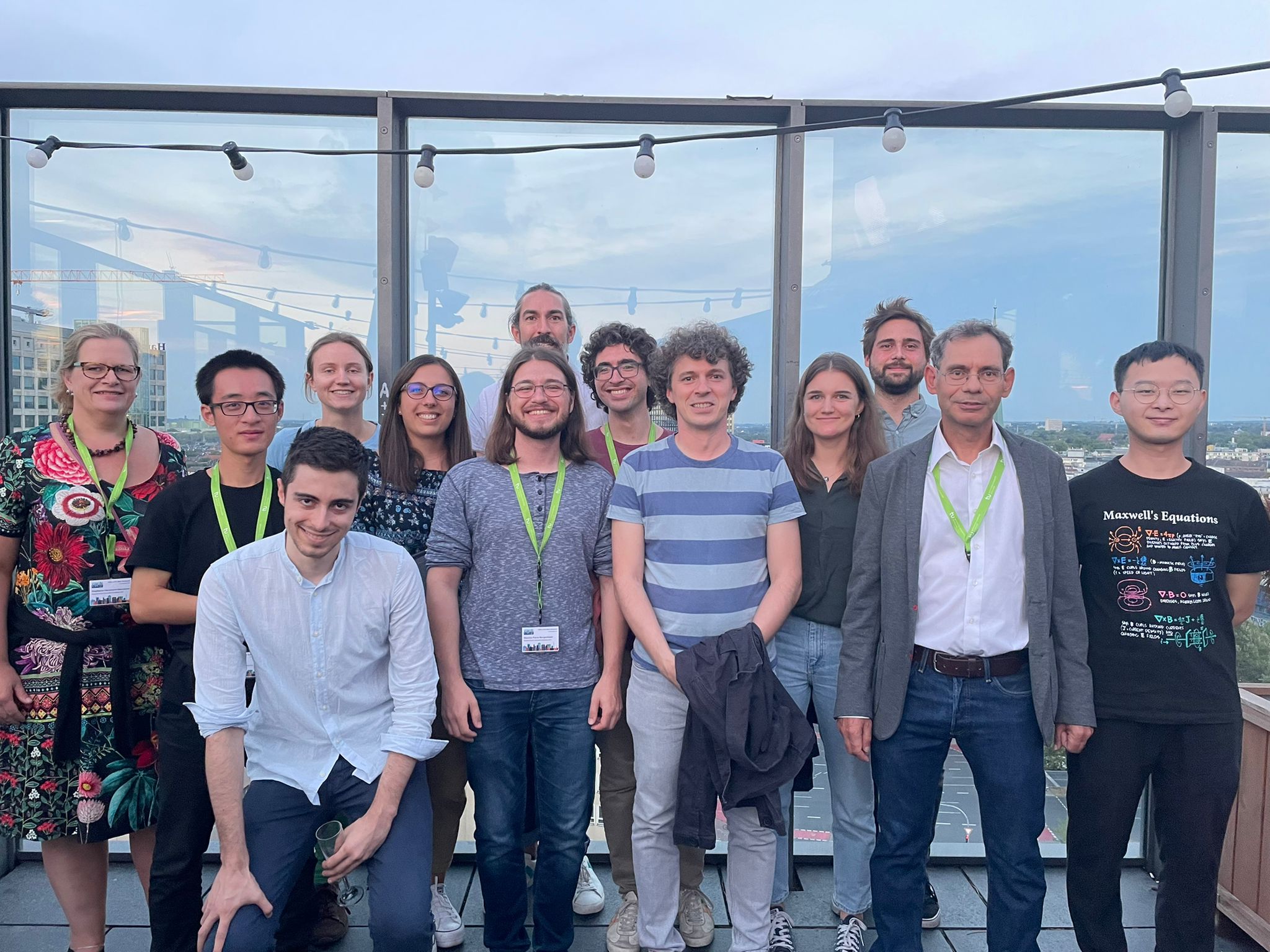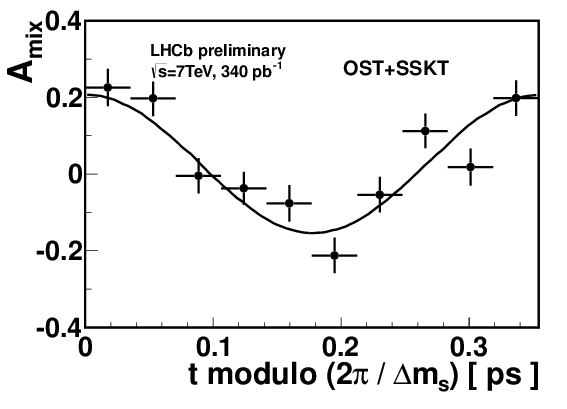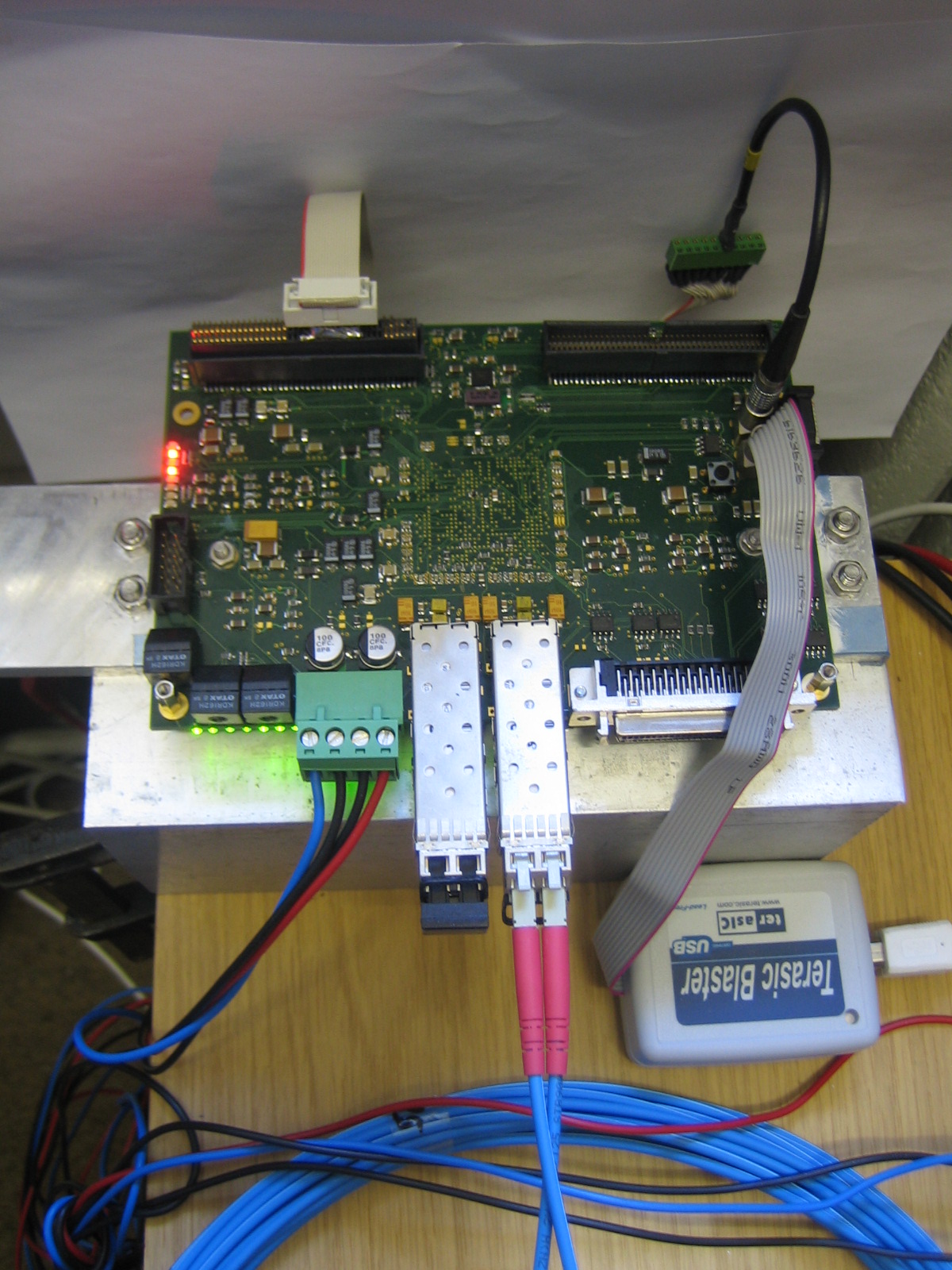
Arbeitsgruppe

-
The Heidelberg group is a member of the LHCb collaboration. We
cover a broad field of activities: We were one of the groups to
design and construct the OuterTracker (OT) - the main tracking
device of the LHCb experiment - and to develop readout electronics.
Since the construction and installation of this subdetector is nearly
finished, the LHCb group Heidelberg turns its focus on physics analysis.
The activities of our group are as follows:
Measurement of the mixing frequency $\Delta m_s$
-
Oscillation from particles to antiparticles is a unique property of neutral
mesons. $B_s^0$ mesons change their flavour about 20 times before they decay,
thus the oscillating frequency is extremely fast. To resolve this fast mixing
an excellent decay time resolution is mandatory. Students of the Heidelberg
LHCb group performed the world best measurement of the $B_s^0 - \bar{B_s^0}$
oscillation frequency.

The precise measurement of CP violation (particle-antiparticle asymmetry) in
the neutral $B$-Meson-System is a very sensitive probe of physics beyond the
Standard model.
Especially the measurement of the CP violating phase $\Phi_s$ in the interference of
decay and mixing in the mode $B_s \rightarrow J//\psi \Phi$ is one of the
key analysis of the LHCb experiment. Students of the Heidelberg LHCb group performed
the most precise measurement of this phase.

CP violation (particle-antiparticle asymmetries) in charm mesons is expected
to be very small. To measure such small asymmetries requires huge data samples
and a precise understanding of the experiment. Small asymmetries e.g. in the
reconstruction of charged decays can bias these results. The LHCb collaboration
has recently found an evidence of CP violation in the charm system. Physicists
from our group work on a cross-check measurement to confirm this previous
result.
Measurement of particle multiplicities
-
Um die Ereignisumgebung von seltenen, interessanten Teilchenzerfällen in Simulationen richtig beschreiben zu können, bedarf es einer Optimierung der verwendeten Modellparameter. Eine wichtige Information, die für die Anpassung dieser Parameter benötigt wird, ist die mittlere Anzahl an Teilchen, die bei einer Proton-Proton Kollision entstehen. Durch die spezielle Vorwärtsgeometrie des LHCb Detektors ist es möglich diese Teilchenproduktion in einem bisher nicht vermessenen Bereich zu untersuchen. Ein Vergleich zwischen Simulation und Daten zeigt, dass die Anzahl an produzierten Teilchen von bisherigen Modellen unterschätzt wird.
Aus den Informationen, die die Teilchen im LHCb-Detektor hinterlassen, werden mithilfe von Algorithmen Spuren gebaut. Für die Rekonstruktion wird dabei eine hohe Effizienz bei gleichzeitig geringer Fehlerrate gefordert.
Um eine möglichst gute Auflösung zu garantieren werden hierbei physikalische Effekte berücksichtigt, die die Teilchenbahnen beeinflussen. Die sehr effiziente LHCb-Spurrekonstruktionseffizienz (gemessen: 97% in Daten und Simulation, für $J//\psi \rightarrow \mu\mu$ Spektrum) ist von grundlegender Bedeutung, denn sie legt fest, ob eine Spur in der Analyse verwendet wird oder nicht.
LHCb Upgrade
-
The LHCb group in Heidelberg is involved in the planned upgrade of the LHCb
experiment. We are contributing to several areas:
The tracking system of the LHCb detector will be read out with 40 MHz.
We develop and test according readout electronics.
We are involved in the development of a large area tracking detector build
out of scintillating fibers.
We work on tracking software to study the performance of the planed upgrade
detector components and thus give valuable input to technology decisions.






